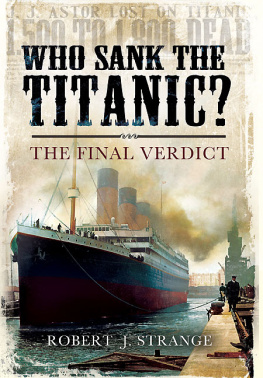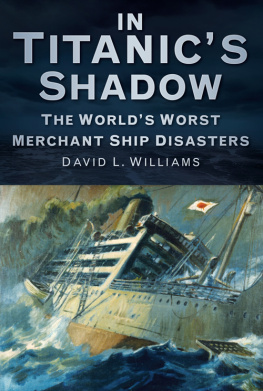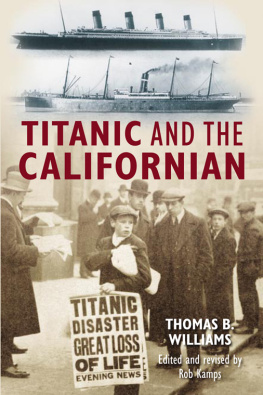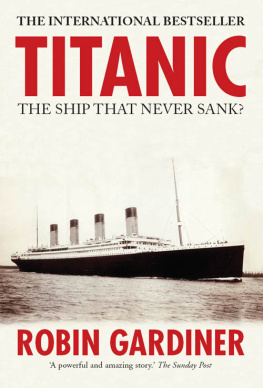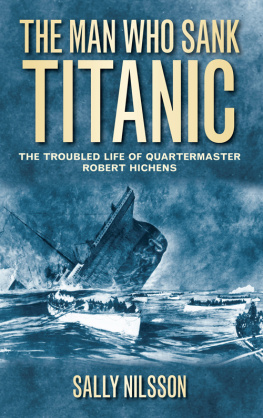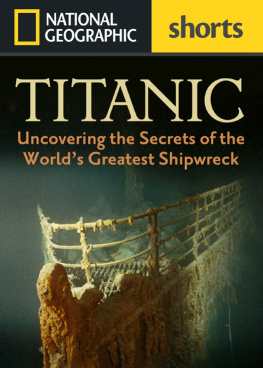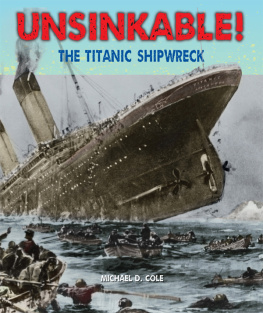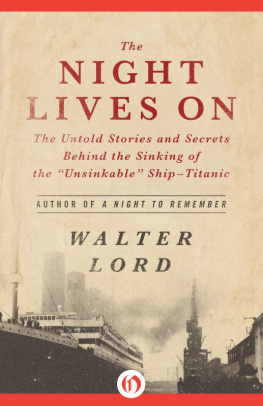Dedicated to the best of all friends
Annette Clarke
Friendship is being there when someones feeling low and not being afraid to kick them.
Randy K. Mulholland, Something Positive
First published in Great Britain in 2012 by
PEN & SWORD MARITIME
an imprint of
Pen & Sword Books Ltd
47 Church Street
Barnsley
South Yorkshire
S70 2AS
Copyright Robert J. Strange, 2012
ISBN 978 1 84884 470 4
The right of Robert J. Strange to be identified as the author of this work has been asserted by him in accordance with the Copyright, Designs and Patents Act 1988
A CIP catalogue record for this book is available from the British Library
All rights reserved. No part of this book may be reproduced or transmitted in any form or by any means, electronic or mechanical including photocopying, recording or by any information storage and retrieval system, without permission from the Publisher in writing.
Typeset in Ehrhardt
by Chic Media Ltd
Printed and bound in England
by CPI Group (UK) Ltd, Croydon, CR0 4YY
Pen & Sword Books Ltd incorporates the imprints of Pen & Sword Aviation, Pen & Sword Family History, Pen & Sword Maritime, Pen & Sword Military, Pen & Sword Discovery, Wharncliffe Local History, Wharncliffe True Crime, Wharncliffe Transport, Pen & Sword Select, Pen & Sword Military Classics, Leo Cooper, Remember When, The Praetorian Press, Seaforth Publishing and Frontline Publishing
For a complete list of Pen & Sword titles please contact
PEN & SWORD BOOKS LIMITED
47 Church Street, Barnsley, South Yorkshire, S70 2AS England
E-mail:
Website: www.pen-and-sword.co.uk
Foreword
T he basic facts of the Titanic disaster have long been accepted throughout the 100 years since the then biggest ship in the world sank beneath the waves of the Atlantic Ocean. On her maiden voyage from Southampton to New York, the Royal Mail Ship Titanic struck an iceberg late on the evening of 14 April 1912. She sank in the early hours of the following morning after an estimated 3,845,000 gallons of water had poured in below her waterline. The crew had launched all of her too few lifeboats to try and save as many women and children as possible. But her officers were so badly trained that lifeboats were lowered away with far fewer people than they were designed to hold.
The precise number of passengers and crew who sailed on Titanic has been much debated over the years, but the authoritative British Wreck Commissioners report recorded at the time that 2,201 souls were on board that night. Only 711 people were saved in the boats, leaving 1,490 others to drown or freeze to death in the bitterly cold, but abnormally calm, water.
Were you to have been caught up in the tragedy, your gender, financial position and social class would all have influenced your chance of survival. More than three-quarters of all the women were rescued, but less than one fifth of the men. Every child in First Class was saved, but two out of three of Third Class children were not. At greatest risk of all were the 454 men booked in Third Class; only around one in ten of them managed to get into a lifeboat.
In the aftermath of the tragedy, two lengthy and expensive inquiries one on each side of the Atlantic produced new safety recommendations. Neither hearing attached any significant blame to any company, government department or individual involved in the management, construction or safety regulations of the ship. No shipping company boss lost his job. Nobody involved in building the ship was dismissed. No politician responsible for safety at sea resigned or was thrown out of office. There were no criminal prosecutions.
During the century since those inquiries were concluded, a wealth of additional information about Titanics sinking has entered the public domain. Previously secret government files have been released into the national archive collections of both Britain and the USA. Personal and political memoirs have been written. Scientists have uncovered the secrets of Titanics construction by studying metal fragments retrieved from 2 miles under the Atlantic Ocean. The recollections, stories, excuses and self-justifications of everybody caught up in the disaster are now being examined in the light of this mass of new evidence.
Many famous men are now being found to be wanting.
Acknowledgements
T his book owes much of its existence to the expertise of the staff of a number of national archives houses and a wide range of specialist local history and university libraries throughout the UK. Without the excellence and efficiency of such institutions it would be impossible to uncover the first person accounts and true history of events such as the construction of Titanic. I have received unstinting help from a long list of institutions including, but not limited to: the UK National Archives (PRO) at Kew in West London, the Public Records Office of Northern Ireland (PRONI), the US National Archives and the Library of Congress in Washington D.C., various American universities who have safeguarded the archives of many obscure and defunct newspapers from cities throughout North America, the British Library (especially the ever-helpful staff of the librarys newspaper archive at Colindale), the National Maritime Museum at Greenwich, the Morgan Library and Museum in New York City, the Merseyside Maritime Museum in Liverpool, the Kelham Island Industrial Museum in Sheffield, the Modern Records Centre of the University of Warwick, the Southampton Maritime Museum, the Corus Record Centre in Deeside, the Staffordshire and Stoke-on-Trent Archive Service, and the Clydebuilt Maritime Heritage Centre in Glasgow. My special thanks must go to Miss Gemma McCallion of PRONI in Belfast for her help at a time when the museum was suffering severe disruption from a then imminent closure and move to new headquarters at the citys refurbished Titanic Quarter.
Outside of such archive repositories, I received invaluable help and advice from a range of pubic and commercial organizations including, but again not limited to, the International Ice Patrol of the United States Coast Guard service, the Royal National Lifeboat Institution, the National Union of Seamen, the Federal Emergency Management Agency of the US Department of Homeland Security, the Mission to Seafarers, Harland and Wolff Heavy Industries Ltd., Tyssenkrupp Marine Systems, General Dynamics Electric Boat of Groton, Connecticut, Fairview Lawn Cemetery of the Halifax Regional Municipality in Nova Scotia and the city councils of Southampton, Belfast, Liverpool and Cobh. Special thanks are again due to the archivists of the Royal Belfast Academical Institution, and to Susan Crossland, of Harrow School, in London.
This book began life after an attempt to develop a television programme to coincide with the centenary of the sinking of Titanic and, although that project never came to fruition, my gratitude is due to all I worked with at Pioneer Film and Television Productions Ltd. The book would never have been possible without the invaluable assistance of my literary agent, Doreen Montgomery of Rupert Crew. Above all, it depended on the specialist, in-depth research and assistance of my son, David Strange, who spent countless hours unearthing dusty files, which had rarely before seen the light of day, from within the bowels of the PRO at Kew and at PRONI in Belfast. His support was mirrored by the assistance and constant encouragement of my younger son, William Strange, and, most importantly of all, of my wife, Pam.
Chapter One
I reported it as soon as I seen it
11.35 pm
Sunday, 14 April 1912
Crows-nest of RMS Titanic
Dead reckoning position: 41 46 N, 50 41 W
Next page
